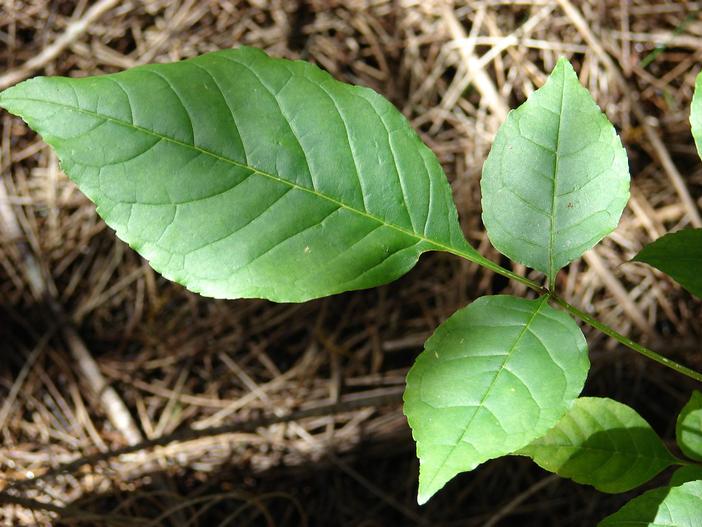Tropical Ash
(Fraxinus uhdei)
Tropical Ash (Fraxinus uhdei)
/
/

Forest and Kim Starr
CC BY 2.0
Image By:
Forest and Kim Starr
Recorded By:
Copyright:
CC BY 2.0
Copyright Notice:
Photo by: Forest and Kim Starr | License Type: CC BY 2.0 | License URL: https://creativecommons.org/licenses/by/2.0/ | Uploader: Starr Environmental | Publisher: Flickr

































Estimated Native Range
Summary
Fraxinus uhdei, commonly known as Tropical Ash or Shamel Ash, is a deciduous tree native to the riparian zones and moist forests of Mexico and Central America. It can reach a height of 50-80 feet and a width of 20-35 feet. The tree is characterized by its large, pinnately compound leaves and a rounded canopy. It produces inconspicuous flowers, with male and female flowers on separate trees (dioecious). The flowers are followed by samaras, which are a type of winged fruit. In its native habitat, Tropical Ash is an important component of riverine ecosystems, providing habitat for various wildlife species.
Tropical Ash is valued for its rapid growth and adaptability to urban environments, making it a popular choice for street trees in warmer regions, including Mexico and the southwestern United States. It has a high tolerance for air pollution and is often used to provide quick shade due to its fast-growing nature. However, its aggressive root system can damage sidewalks and other infrastructure. In cultivation, it requires full sun and does well with moderate water, preferring soils with good drainage. While it is not known for a particular susceptibility to diseases, it can be prone to ash borer insects. Due to its invasive potential, caution is advised when planting it outside its native range, as it can outcompete native vegetation and disrupt local ecosystems, as has happened in Hawaii.CC BY-SA 4.0
Tropical Ash is valued for its rapid growth and adaptability to urban environments, making it a popular choice for street trees in warmer regions, including Mexico and the southwestern United States. It has a high tolerance for air pollution and is often used to provide quick shade due to its fast-growing nature. However, its aggressive root system can damage sidewalks and other infrastructure. In cultivation, it requires full sun and does well with moderate water, preferring soils with good drainage. While it is not known for a particular susceptibility to diseases, it can be prone to ash borer insects. Due to its invasive potential, caution is advised when planting it outside its native range, as it can outcompete native vegetation and disrupt local ecosystems, as has happened in Hawaii.CC BY-SA 4.0
Plant Description
- Plant Type: Tree
- Height: 50-80 feet
- Width: 20-35 feet
- Growth Rate: Rapid
- Flower Color: N/A
- Flowering Season: Spring, Summer
- Leaf Retention: Evergreen, Semi-Deciduous
Growth Requirements
- Sun: Full Sun
- Water: Medium
- Drainage: Fast, Medium
Common Uses
Bee Garden, Bird Garden, Butterfly Garden, Street Planting
Natural Habitat
Native to riparian zones and moist forests of Mexico and Central America
Other Names
Common Names: Shamel Ash
Scientific Names: , Fraxinus uhdei, Fraxinus hondurensis, Fraxinus cavekiana, Fraxinus chiapensis, Fraxinus uhdei var. pseudoperiptera, Fraxinus americana f. ovalifolia, Fraxinus americana var. ovalifolia, Fraxinus americana var. uhdei, Fraxinus ovalifolia
GBIF Accepted Name: Fraxinus uhdei (Wenz.) Lingelsh.